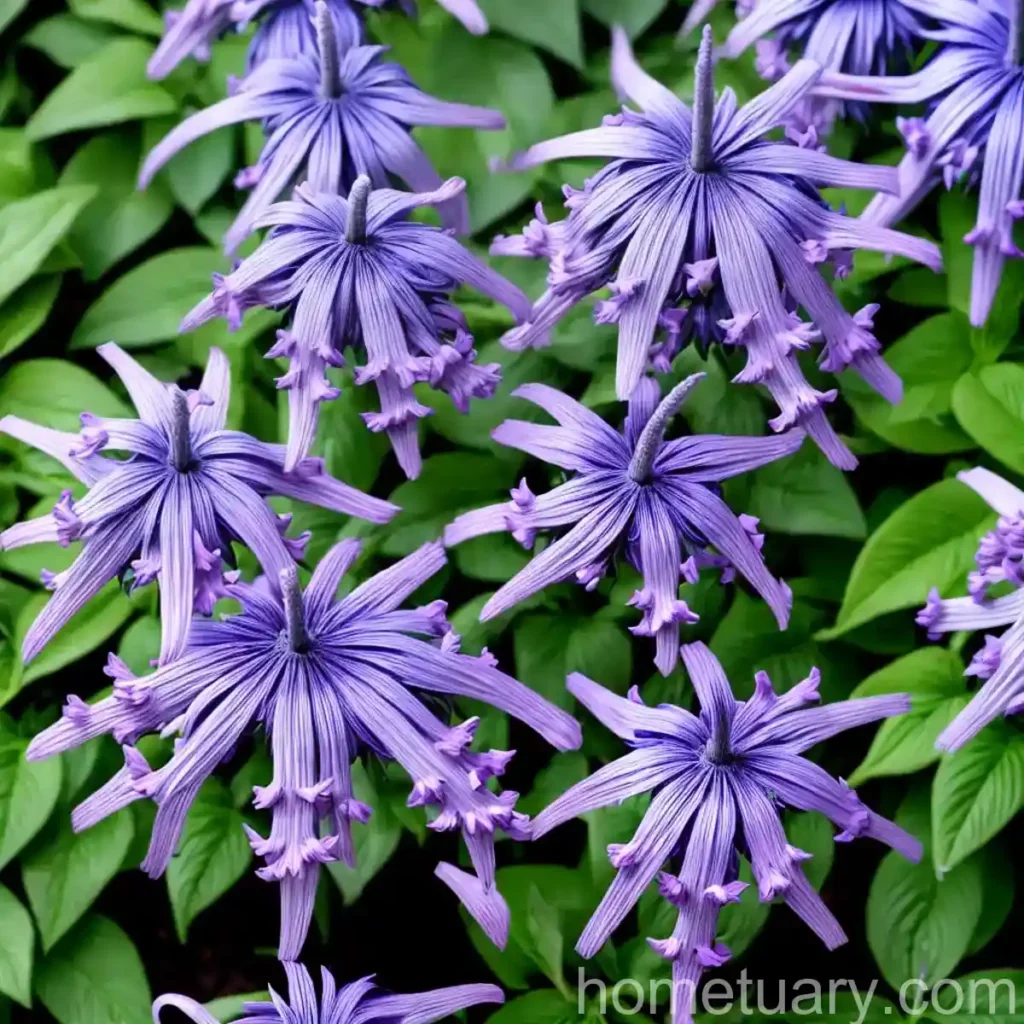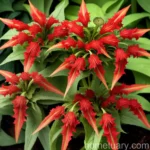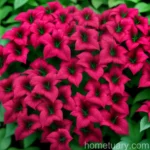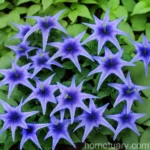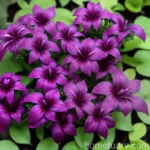Great Blue Cardinal Flower (Lobelia siphilitica ‘Lilac Candles’)
Introduction
Plants are an integral part of our ecosystem, contributing to the beauty of our surroundings and providing essential benefits to the environment. Among the diverse array of plant species, the Great Blue Cardinal Flower, scientifically known as Lobelia siphilitica ‘Lilac Candles’, stands out as a stunning perennial with captivating blue flowers. This plant has garnered attention for its aesthetic appeal and its significant contributions to gardens and natural habitats. In this comprehensive guide, we will delve into the various aspects of the Great Blue Cardinal Flower, from its cultural significance and uses to its preferred growing conditions and maintenance. Whether you are an experienced gardener or a novice enthusiast, this guide will provide valuable insights and practical tips to help you make the most of this fascinating plant in your own garden.
What is the Great Blue Cardinal Flower?
The Great Blue Cardinal Flower, also known as Lobelia siphilitica ‘Lilac Candles’, is a captivating flowering plant that belongs to the Campanulaceae family. This striking perennial is native to North America and is particularly prevalent in eastern and central regions of the continent, where it thrives in a variety of habitats, including wetlands, moist meadows, and woodland areas.
Key Takeaways – Great Blue Cardinal Flower (Lobelia siphilitica ‘Lilac Candles’)
- Scientific Name: Lobelia siphilitica ‘Lilac Candles’
- Family: Campanulaceae
- Common Names: Great Blue Cardinal Flower, Blue Cardinal Flower
- Plant Type: Perennial
- Flower Color: Blue
- Sunlight: Full sun to partial shade
- Water: Moist, well-drained soil
- Soil Type: Rich, loamy soil
- Hardiness Zone: 4-8
- Mature Height: 2-3 feet
- Blooming Season: Late summer to early fall
Great Blue Cardinal Flower Culture
Uses
The Great Blue Cardinal Flower has a rich history of cultural and medicinal significance. Traditionally, various Native American tribes utilized certain species of Lobelia, including Lobelia siphilitica, for their therapeutic properties. The plant’s roots were often employed in herbal remedies to treat respiratory ailments, muscle spasms, and other health conditions.
In contemporary settings, the Great Blue Cardinal Flower is primarily cultivated for its ornamental value. Its enchanting blue flowers and graceful habit make it a desirable addition to native plant gardens, woodland gardens, and naturalistic landscapes, where it attracts pollinators, such as bees, butterflies, and hummingbirds. Additionally, it can be used for cut flower arrangements, adding a touch of natural elegance to interior spaces.
Water
Proper watering is essential for the well-being of the Great Blue Cardinal Flower. This plant thrives in consistently moist soil, especially during its active growth periods. While it can tolerate brief periods of dryness, it is important to ensure that it does not endure prolonged drought, as this can compromise its vitality and flowering performance. Additionally, given its affinity for moist environments, the Great Blue Cardinal Flower can be an excellent choice for planting in boggy areas or around bodies of water, where it can fulfill an ecological role in stabilizing soil and enhancing water quality.
Sunlight
In terms of sunlight requirements, the Great Blue Cardinal Flower prefers partial shade to full sun. In its native habitats, it is often found growing along the edges of woodlands, in meadows, and near streams, where it receives dappled sunlight or partial shade throughout the day. When grown in garden settings, it can adapt to a range of light conditions as long as it is provided with adequate moisture and well-drained soil.
Fertilizer
While the Great Blue Cardinal Flower is relatively low-maintenance in terms of fertilization, providing it with a modest application of balanced, slow-release fertilizer in the spring can promote healthy growth and abundant flowering. Selecting a fertilizer with a balanced formulation, such as 10-10-10, and following the recommended application rates can ensure that the plant receives the essential nutrients it needs without being over-fertilized, which can lead to excessive foliage at the expense of flower production.
Great Blue Cardinal Flower Soil
The soil requirements of the Great Blue Cardinal Flower are centered around maintaining consistently moist, well-drained conditions. It thrives in rich, loamy soils with ample organic matter, which provide the plant with the necessary nutrients and water retention capacity. When cultivating this perennial in garden settings, it is beneficial to amend the soil with organic compost or peat moss to enhance its moisture-retaining capabilities and fertility.
Pruning
Pruning is an important aspect of maintaining the health and visual appeal of the Great Blue Cardinal Flower. As the flowering season comes to a close, removing spent flower spikes can encourage the plant to redirect its energy towards new growth and potential reblooming. Additionally, pruning away any dead or withered foliage can prevent the accumulation of debris around the plant, reducing the risk of disease and pest infestations.
Propagation
Propagating the Great Blue Cardinal Flower can be achieved through division or seed sowing. Dividing mature clumps of the plant in the spring allows for the creation of new plants, each with the potential to establish and bloom in the following season. With proper care and adequate moisture, the young divisions can develop robust root systems and become independent plants over time.
Alternatively, the Great Blue Cardinal Flower can also be propagated from seeds. Collecting ripe seeds from the plant and sowing them in a suitable growing medium provides an opportunity to produce new plants that may exhibit slight variations in flower color and form, contributing to the genetic diversity within the population.
Container Popularity
While the Great Blue Cardinal Flower is commonly grown in garden beds and naturalistic settings, it can also be cultivated in containers, especially for individuals with limited outdoor space. When grown in containers, the same principles of providing moist, well-drained soil and adequate sunlight apply. Selecting a spacious container that accommodates the plant’s mature size and growth habit is important for ensuring its longevity and vitality in a containerized environment.
Great Blue Cardinal Flower – Common Diseases
Disease Diagnosis
Like many plants, the Great Blue Cardinal Flower is susceptible to certain diseases, particularly those associated with fungal pathogens and environmental stress. One of the most common diseases that affects Lobelia species is powdery mildew, a fungal infection characterized by the presence of white powdery patches on the foliage and stems. This condition can develop in periods of high humidity or poor air circulation, and it can weaken the plant if left untreated. To prevent powdery mildew, it is essential to maintain good air circulation around the plant, avoid overhead watering, and promptly address any signs of infection with appropriate fungicidal treatments.
Common Pests
In addition to diseases, the Great Blue Cardinal Flower can attract certain pests that may pose a threat to its health and vigor. Aphids are a frequent nuisance for this plant, as they feed on the sap of the foliage and can distort new growth if their populations become excessive. Controlling aphids can be achieved through careful monitoring and the application of insecticidal soaps or horticultural oils when necessary. Thrips and slugs are also potential pests that may target the Great Blue Cardinal Flower, and proactive pest management practices can help mitigate their impact on the plant.
Botanist’s Tips
- When selecting a planting site for the Great Blue Cardinal Flower, consider areas with evenly moist soils and partial shade to protect the plant from intense midday sun, especially in regions with warm climates.
- Incorporate companion plants with contrasting textures and colors to create a visually engaging garden composition, and consider pairing the Great Blue Cardinal Flower with other native perennials and woodland species for a naturalistic effect.
- Regularly monitor the plant for signs of stress, disease, or pest activity, and promptly address any issues to maintain its overall health and appearance.
- Consider the ecological value of the Great Blue Cardinal Flower and its role in supporting pollinators, and integrate it into garden designs that prioritize biodiversity and environmental sustainability.
Fun Facts
- The Great Blue Cardinal Flower is known for its attraction to hummingbirds, which seek out the nectar-rich blooms as a reliable food source during their seasonal migrations.
- The specific epithet “siphilitica” in the scientific name of the plant is thought to have originated from historical uses of related species in treating certain diseases, although it is important to note that modern medical knowledge does not support these traditional applications.
Links to External Resources
For further information on the Great Blue Cardinal Flower and related topics, consider exploring the following resources:
- University of Maryland Extension – Native Plants of Maryland
- Lady Bird Johnson Wildflower Center – Native Plant Database
- American Horticultural Society – Native Plants for Wildlife Habitat and Conservation Landscaping
- USDA Plants Database
- North Carolina State Extension – Growing Native Plants
In conclusion, the Great Blue Cardinal Flower (Lobelia siphilitica ‘Lilac Candles’) holds a special place in the realm of native plants and ornamental gardening, and its graceful form and enchanting blue flowers continue to captivate gardeners and nature enthusiasts alike. By understanding its cultural significance, preferred cultural practices, and ecological contributions, we can develop a deeper appreciation for this remarkable plant and harness its potential to enhance our natural landscapes and garden environments.
Bringing the vibrant elegance of the Great Blue Cardinal Flower into our gardens represents a celebration of native flora and a commitment to supporting the ecological well-being of our natural surroundings. Whether planted along water features, featured in native plant gardens, or utilized in floral arrangements, this captivating perennial enriches our lives and the habitats it inhabits.
Let us continue to explore the wondrous diversity of plants and embrace the beauty and functionality of species such as the Great Blue Cardinal Flower, recognizing their significance in shaping and enriching the world around us.
Remember, every seed planted is a step towards a better, more sustainable future for our planet and all its inhabitants. Happy gardening!
Keywords: Blue cardinal flower, Lilac Candles lobelia, Lobelia siphilitica, Great blue flowering plant, ‘Lilac Candles’ Lobelia, Cardinal flower varieties, Lobelia plant care, Blue wildflower, Lobelia siphilitica ‘Lilac Candles’, Perennial blue flowers, Lobelia for garden borders, Native blue plant, Blue-flowered perennial, Cardinal flower hybrids, Lobelia siphilitica cultivars, Lilac Candles lobelia info, Lobelia siphilitica varieties, Blue flowers for landscaping, Lobelia siphilitica ‘Lilac Candles’ care, Cardinal flower plant facts, Lobelia siphilitica common name, Blue plant for pollinators, Lobelia siphilitica ‘Lilac Candles’ characteristics, Lobelia siphilitica ‘Lilac Candles’ growth habit, Cardinal flower planting guide, Blue perennial for shade gardens, Lobelia siphilitica ‘Lilac Candles’ propagation, Lobelia siphilitica ‘Lilac Candles’ medicinal uses, Blue flowers attracting hummingbirds, Lobelia siphilitica ‘Lilac Candles’ natural habitat, Best companion plants for blue cardinal flower, Lobelia siphilitica ‘Lilac Candles’ foliage color, Blue flowering plant in the Campanulaceae family, Lobelia siphilitica ‘Lilac Candles’ blooming season, Perennial flowers with blue spikes, Lobelia siphilitica ‘Lilac Candles’ hardiness zone, Blue flowers for wet or boggy areas, Lobelia siphilitica ‘Lilac Candles’ root system, Native plants attracting butterflies, Lobelia siphilitica ‘Lilac Candles’ garden uses, Blue flowers in cottage gardens, Lobelia siphilitica ‘Lilac Candles’ soil requirements, Blue flowers for cut arrangements, Lobelia siphilitica ‘Lilac Candles’ container gardening, Lobelia siphilitica ‘Lilac Candles’ leaf shape, Blue flowers for rock gardens, Lobelia siphilitica ‘Lilac Candles’ plant size, Lobelia siphilitica ‘Lilac Candles’ sunlight needs, Blue flowers for attracting bees, Lobelia siphilitica ‘Lilac Candles’ garden design tips

